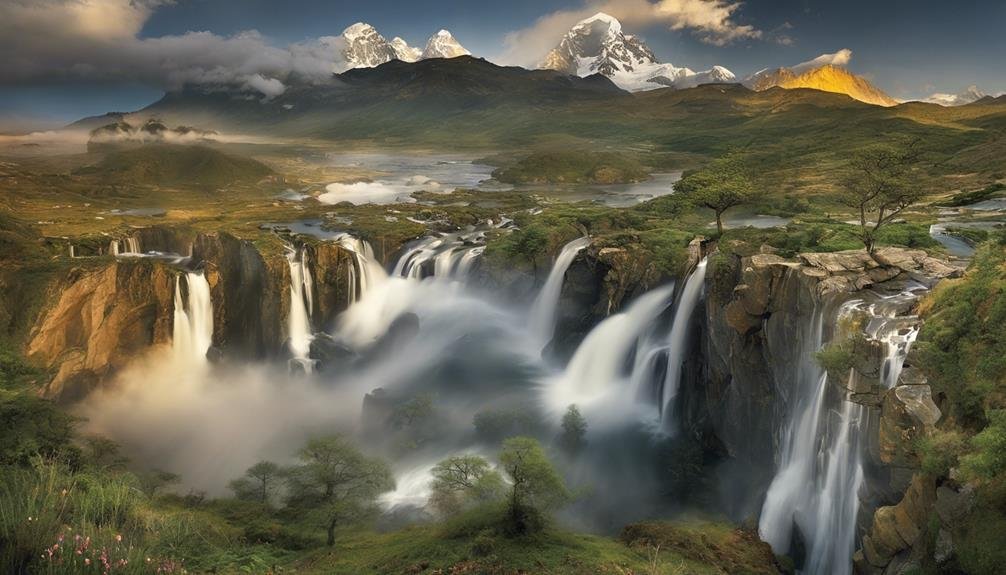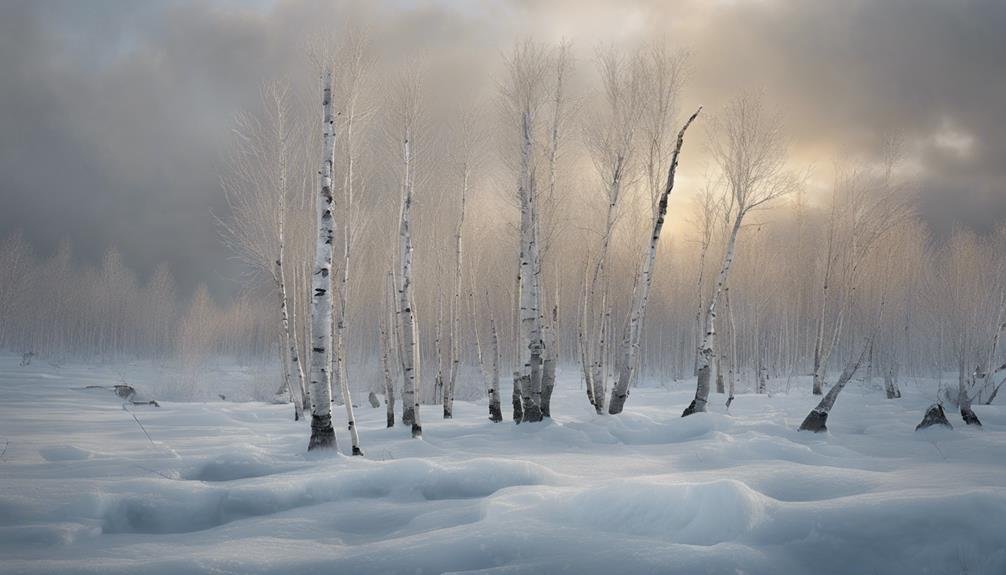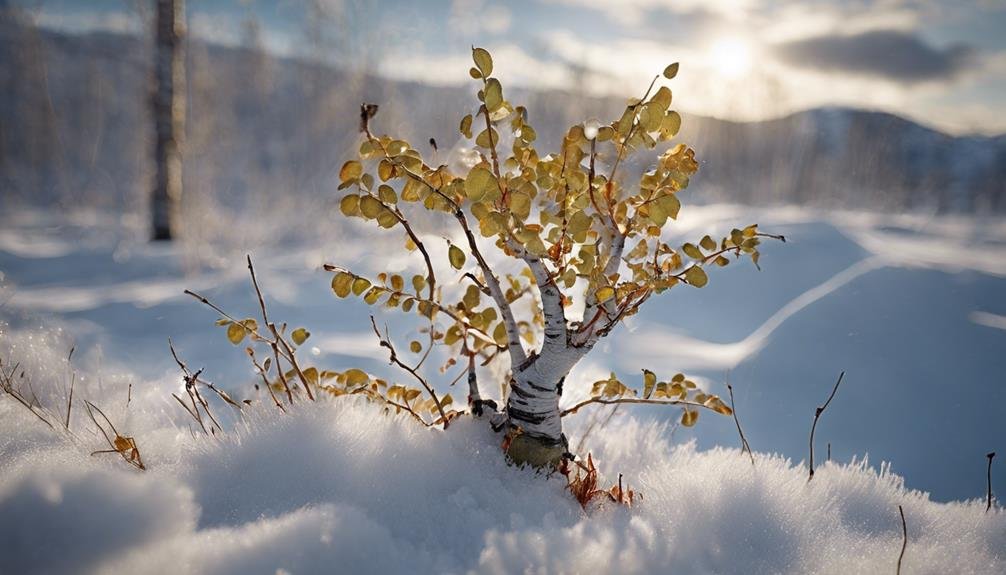Why is the Dwarf Birch (Betula Nana) regarded as more than just a small shrub in its native habitats? Despite its relatively small size, standing only 1-1.2 meters tall, the Dwarf Birch plays a significant role in its ecosystems, especially in arctic and cool temperate regions. This introduction aims to shed light on the Dwarf Birch, highlighting its unique characteristics and the importance of its study in the face of environmental changes.
The Dwarf Birch is noteworthy for its shiny red-copper bark and distinctive rounded leaves, showcasing its beauty despite the challenging climates it thrives in. Its ability to adapt to acidic, well-drained soils exemplifies its resilience and versatility. The ecological significance of Betula Nana is further emphasized through its genomic sequencing and its status on the IUCN Red List, drawing scientific and conservation attention. With the increasing focus on climate change and biodiversity, understanding the Dwarf Birch‘s vulnerabilities and adaptive strategies is more relevant than ever. This overview provides a glimpse into the pivotal role of Betula Nana within its ecosystems, underlining the necessity of ongoing research and conservation efforts.
Key Takeaways
In summary, the Dwarf Birch is noteworthy for its unique leaf shapes and effective pollination strategies, which are essential for the ecosystems of the Arctic and sub-Arctic regions.
However, Betula nana is at risk from climate change, underscoring the importance of conservation efforts. The detailed genetic analysis of this species has provided insights into its adaptability and resilience.
Preserving Dwarf Birch is crucial for maintaining biodiversity and ecological balance in its habitats, in the face of environmental changes.
Key Takeaways:
- Dwarf Birch features unique leaf shapes.
- It uses effective pollination strategies.
- Climate change poses a significant risk to its survival.
- Genetic analysis offers insights into its adaptability.
- Conservation of Betula nana is vital for ecological balance.
Exploring Dwarf Birch
Resilience in Harsh Climates
Betula nana, more commonly known as Dwarf Birch, stands out for its ability to thrive in the most unforgiving environments. This deciduous shrub, native to the Northern Hemisphere, adapts remarkably well to both arctic conditions and cool temperate ecosystems. Its capacity to endure seasonal changes underlines its ecological significance and its charm within natural landscapes.
Sunlight and Soil Preferences
One of the key aspects of Dwarf Birch is its preference for full sunlight, which is paramount for its growth. It flourishes in wet, yet well-drained sites, showcasing its potential for cultivation in garden areas that pose a challenge due to their conditions. This characteristic also points to its utility in preventing soil erosion, thanks to its robust root system.
Compact Beauty for Small Spaces
Despite reaching modest heights of only 1 to 3 feet, Dwarf Birch‘s compact and bushy nature makes it exceptionally suitable for rock gardens and confined spaces. Its small stature doesn’t diminish its visual appeal. Instead, it adds a unique aesthetic to landscapes where space is at a premium but the desire for natural beauty remains high.
A Keystone Species for Wildlife
Beyond its visual and stabilization advantages, Dwarf Birch plays a pivotal role in supporting wildlife. It acts as a vital habitat and food source for various species, underscoring its contribution to preserving biodiversity in its native regions. Its presence is indicative of a healthy, balanced ecosystem.
Contribution to Conservation and Natural Beauty
Hardy across USDA zones 2-5, the versatility and durability of Dwarf Birch make it an excellent choice for conservation efforts and naturalistic plantings. It not only aids in maintaining ecological equilibrium but also enriches the visual allure of the environment it inhabits, proving its worth beyond mere aesthetics.
Leaf Shape and Texture

Leaf Characteristics of Betula Nana
The leaves of Betula nana stand out due to their small, almost circular shape, which is complemented by a glossy texture, making them visually appealing. Their size varies between 5-15 mm in length, a feature that aids in the plant’s identification among the flora of its native environments. The presence of coarse rounded teeth along the leaf margins is another distinctive trait, alongside the variation in the leaf bases, which can be either straight or notched. These aspects are crucial for recognizing Betula nana in the wild.
Adaptations to Harsh Climates
The Betula nana, or dwarf birch, is well-adapted to survive in the extreme conditions of arctic and cool temperate regions. The glossy texture of its leaves isn’t merely for aesthetics; it plays a significant role in the plant’s ability to adapt to its challenging habitats. The diminutive size of the leaves is an evolutionary advantage, allowing the plant to minimize moisture loss and withstand the cold, windy conditions characteristic of high altitudes. This resilience is a testament to the Betula nana‘s evolutionary success in harsh climates.
Ecological Significance
In its native habitats, the Betula nana plays a pivotal role in the ecosystem. Despite the small size of its leaves, the plant exhibits remarkable toughness, enabling it to thrive in less-than-ideal conditions. This adaptability not only underscores the plant’s importance in its ecosystem but also highlights its evolutionary journey. The unique leaf shape and texture of Betula nana are key to its survival and proliferation in the extreme environments of high altitudes, where it contributes significantly to the biodiversity of arctic and cool temperate zones.
Arctic and Subarctic Regions

Exploring the Resilience of Betula nana in Arctic and Subarctic Habitats
The Arctic and Subarctic Regions: A Habitat for Survival
Betula nana, commonly known as dwarf birch, demonstrates an incredible capacity to thrive in the extreme conditions of the arctic and subarctic regions. This includes vast areas across Greenland, Iceland, northern Europe, and northern North America. The survival strategies of this plant in such environments are a testament to its resilience.
Altitudinal Preferences and Soil Adaptations
One of the remarkable aspects of Betula nana is its preference for higher altitudes, specifically above 300 meters. This preference for cooler, mountainous regions contributes to its unique ecological niche. Moreover, it thrives in acidic, nutrient-poor soils that are wet yet well-drained. This specific soil requirement ensures that Betula nana faces limited competition from other shrub species, allowing it to flourish.
Ecosystem Integration and Ecological Roles
Betula nana isn’t just surviving in these harsh climates; it plays a pivotal role in its ecosystems, such as the black spruce-birch and sedge-shrub tundra. Its ability to thrive in challenging conditions makes it a key player in its habitat, contributing to the overall biodiversity and ecological balance of the arctic and subarctic regions.
Adaptations and Subspecies Diversity
The stature of Betula nana, with heights reaching only 1-1.2 meters, is an adaptation that allows it to withstand the arctic and subarctic weather. Furthermore, the existence of two subspecies, B. nana subsp. nana and B. nana subsp. exilis, illustrates its ability to adapt to a range of environmental challenges. This diversity highlights the shrub’s evolutionary response to different habitats.
Conservation Status and Its Importance
Recognized on the IUCN Red List of Threatened Species, Betula nana highlights the importance of understanding and preserving the biodiversity of the arctic and subarctic regions. Its role in these ecosystems underlines the need for continued research and conservation efforts to protect such unique species and their habitats.
Pollination Mechanisms

Pollination Through the Wind
The dwarf birch, known scientifically as Betula nana, has evolved a unique method of pollination that’s perfectly suited to its Arctic and Subarctic habitats. This method doesn’t rely on insects but instead utilizes the power of the wind to disperse pollen grains. This adaptation allows for effective pollination even in harsh environments where insects might be scarce.
Adaptations for Wind Pollination
The flowers of Betula nana aren’t designed to attract pollinators visually or through scent. Instead, they’re adapted to make the most of the wind. These adaptations include being inconspicuous, which might seem counterintuitive for a flowering plant. However, this trait ensures that the plant can release and catch pollen carried by the wind, making the process more efficient in its natural setting.
Impact on Genetic Diversity
One of the key benefits of wind pollination in Betula nana is its contribution to genetic diversity. This method of cross-pollination ensures that pollen grains can travel from one plant to another over considerable distances. As a result, it increases the genetic mix within populations, which is vital for the adaptability and resilience of the species in changing environments.
Climate Change Vulnerability

Challenges Posed by Climate Change to Dwarf Birch
Dwarf birch species, such as Betula nana, are experiencing heightened susceptibility to the changing climate. This small but vital arctic plant plays a significant role in its ecosystem, making understanding its struggles against climate change critical. The survival and spread of Betula nana are at risk due to several factors influenced by global environmental changes.
Temperature and Precipitation Changes
The survival of Betula nana is closely linked to specific climatic conditions. Any significant alteration in temperature and precipitation patterns disrupts its natural habitat. This disruption can lead to changes in the plant’s distribution across the arctic, affecting not only the species itself but also the larger ecosystem that relies on it.
Impact of Changing Fire Dynamics
Fire is a natural part of many ecosystems, playing a role in shaping vegetation patterns and aiding in the regeneration of species like Betula nana. However, climate change is altering the frequency, intensity, and patterns of wildfires. These alterations can hinder the regeneration processes of Betula nana, impacting its ability to survive and thrive in its native habitat.
Threats from Insect Pests and Diseases
Rising temperatures invite the expansion of insect pests and diseases, posing a significant threat to Betula nana populations. These pests and diseases can severely damage or even kill large swathes of Betula nana, reducing biodiversity and altering the arctic ecosystem.
The conservation of Betula nana requires a detailed understanding of its ecological needs, how climate change affects its life cycle and habitat, and the evolving challenges of fire regimes and pest outbreaks. Effective conservation strategies must be dynamic, leveraging ongoing research to safeguard the future of Betula nana in a rapidly changing world.
Frequently Asked Questions
How Tall Do Dwarf Birch Get?
How Tall Does a Dwarf Birch Grow?
Dwarf Birch trees typically grow to a height of 1 to 3 feet. Their ultimate size is determined by several factors including the conditions of their growth environment, soil type, and the climate they are exposed to. Regular pruning is recommended to maintain their bushy appearance, which in turn can contribute to their longevity and make them a more attractive option for wildlife in garden settings.
Is Betula Nana an Evergreen?
Is Betula Nana an Evergreen?
No, Betula Nana is not an evergreen plant. It undergoes seasonal changes, losing its leaves annually. This plant is known for its adaptability to different climates, but it does not keep its leaves throughout the year.
What Is the Smallest Type of Birch Tree?
What is the smallest type of birch tree and its characteristics?
The smallest type of birch tree is known for its ability to thrive in cooler climates and exhibits a slow growth rate. It features small, oval-shaped leaves that transition in color during autumn. This birch reproduces through catkins and has a conservation status that varies.
What Is the Best Birch Tree for a Small Garden?
What is the ideal birch tree for a small garden?
The ideal birch tree for a small garden is one that requires low maintenance. It should prosper in acidic soil, enjoy full sun, and prefer moist conditions. To maintain its health, it needs seasonal pruning and attentive pest management, making it a perfect fit for gardeners with limited space.
Conclusion
Summing up, the Dwarf Birch stands out for its distinctive leaf shapes and efficient pollination methods, making it a vital component in the ecosystems of the Arctic and sub-Arctic regions.
Yet, this species faces significant risks due to climate change, highlighting the need for dedicated preservation actions. The thorough genetic mapping of Betula nana has opened doors to a deeper understanding of its ability to adapt and endure.
Protecting this species is therefore key to sustaining the biodiversity and ecological stability in its natural environments, especially with the ongoing threats posed by environmental changes.


0 Comments